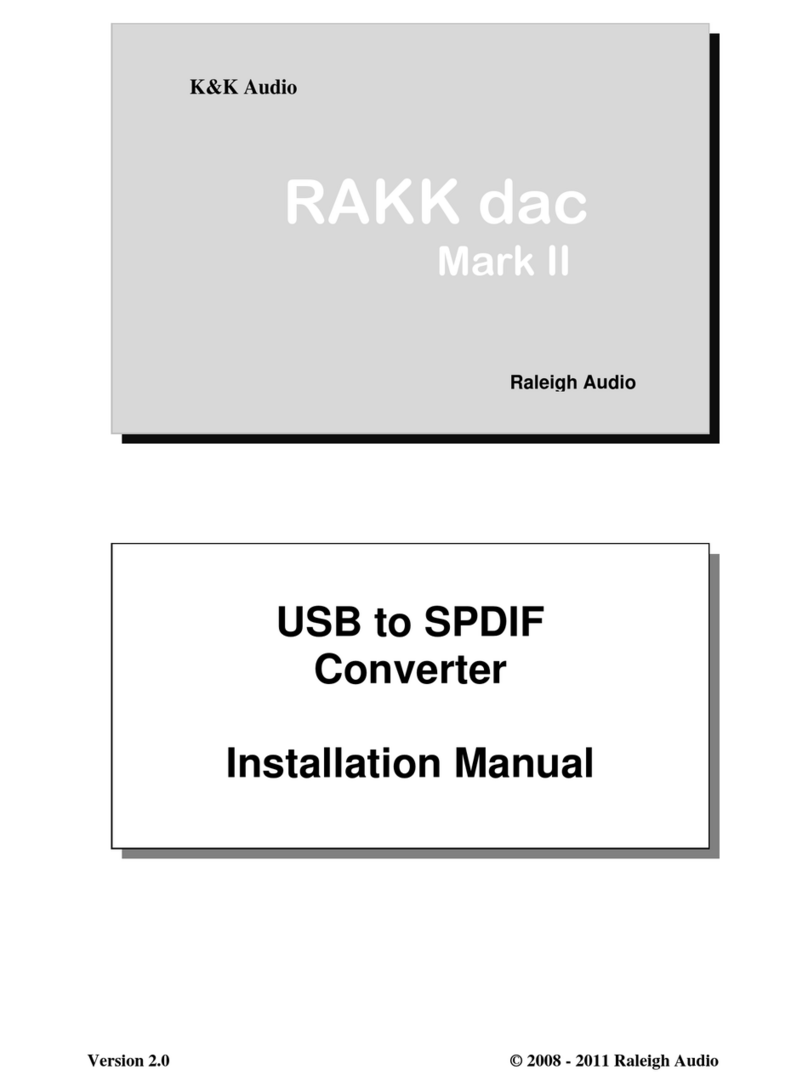
TableofContents
General Information ......................................................................................................................................................2
Table of Contents...........................................................................................................................................................4
Component Parts ...........................................................................................................................................................5
Assembly Instructions ...................................................................................................................................................6
Assemble the Printed Circuit Boards.........................................................................................................................6
Pre-assemble Standard (single input) I2S Adapter with the RAKK dac....................................................................7
Pre-assemble (three-input) I2S Adapter with the RAKK dac....................................................................................9
Pre-wire the printed circuit boards ..............................................................................................................................12
Pre-wire the 10V Regulator (for the RAKK dac) ....................................................................................................13
Pre-wire the 5V Regulator (for the I2S Adapter).....................................................................................................13
Pre-wire the 8V Regulator (for the USB Adapter) ..................................................................................................14
Pre-wire the 12V Power Supply (for the Active Output).........................................................................................15
Pre-wire the Active Output......................................................................................................................................17
Pre-wire the RAKK dac and I2S Interface Adapter (if used) ..................................................................................19
Pre-wire the Power Transformer .................................................................................................................................21
Panel Preparation.........................................................................................................................................................23
Bottom Panel Preparation ........................................................................................................................................23
Back Panel Preparation............................................................................................................................................24
Side Panel Preparation.............................................................................................................................................25
Front Panel Preparation ...........................................................................................................................................25
Panel Assembly ...........................................................................................................................................................26
Bottom Panel Assembly ..........................................................................................................................................26
Back Panel Assembly ..............................................................................................................................................35
Front Panel Assembly..............................................................................................................................................41
Final Assembly and Wiring.........................................................................................................................................43
Wire the Bottom Panel to the Back Panel................................................................................................................43
Wire the Bottom Panel to the Front Panel ...............................................................................................................48
Assemble the Panels ................................................................................................................................................52
Final Adjustments........................................................................................................................................................57
Adjust the Constant Current Sources.......................................................................................................................57
Final Assembly............................................................................................................................................................58
Parts List......................................................................................................................................................................59
Circuit kits ...............................................................................................................................................................59
Front Panel Options .................................................................................................................................................59
Input Options ...........................................................................................................................................................60
Extreme Kit Contents ..............................................................................................................................................61
Document version history............................................................................................................................................64
4





























